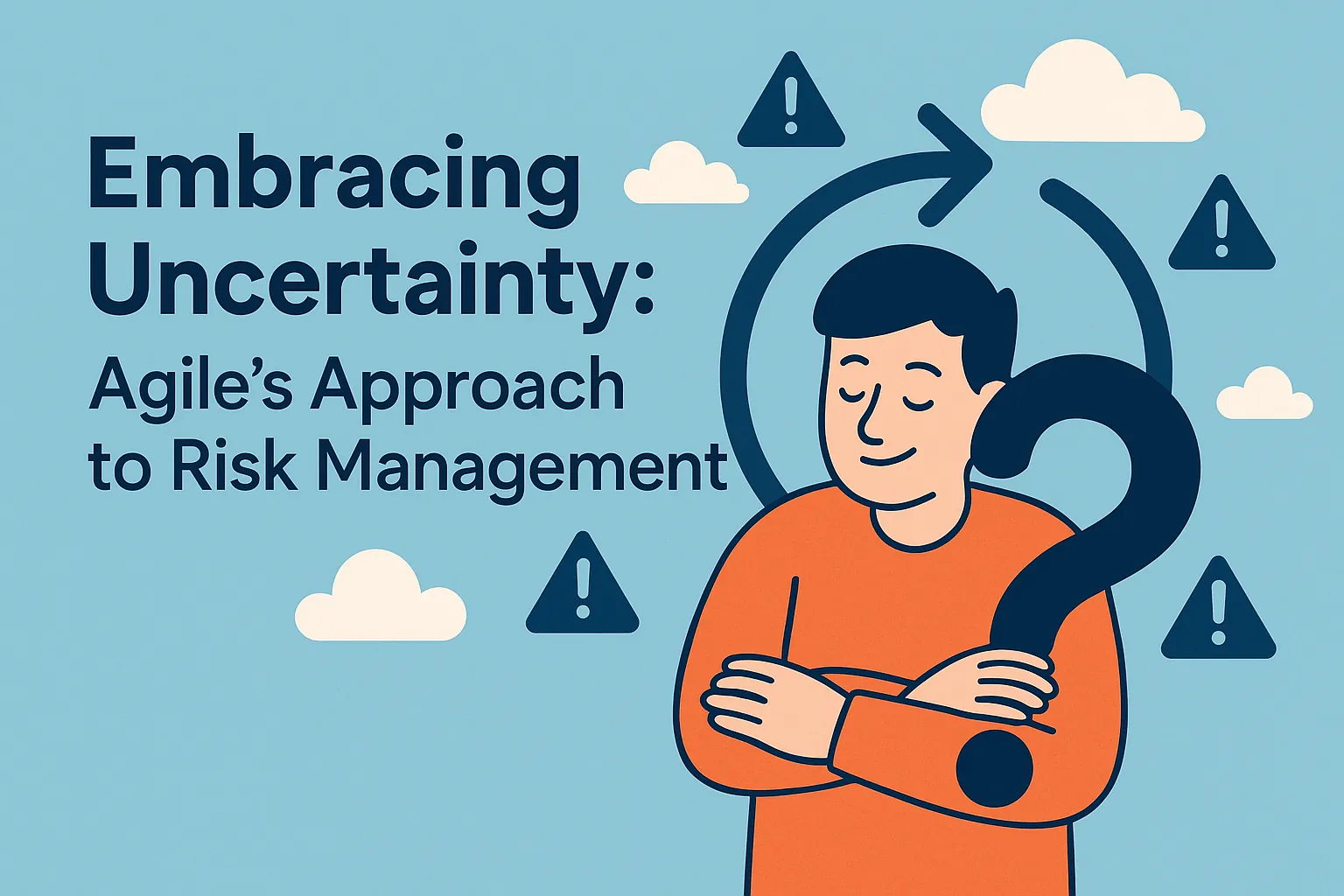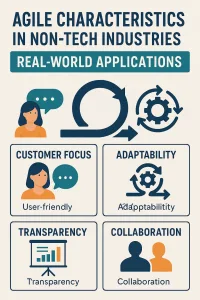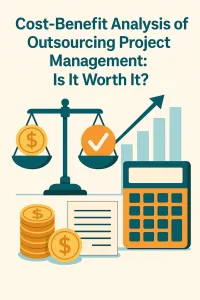Introduction to Agile and Risk Management
The Agile methodology has emerged as a transformative approach that emphasizes flexibility, collaboration, and customer-centricity. Agile is not merely a set of practices; it is a mindset that encourages teams to adapt to change and embrace uncertainty. At its core, Agile is built on several key principles that guide teams in delivering value incrementally and iteratively. These principles include:
- Customer Collaboration: Agile prioritizes direct communication with stakeholders, ensuring that their feedback is integrated throughout the project lifecycle.
- Responding to Change: Unlike traditional methodologies that often resist change, Agile welcomes it, allowing teams to pivot and adjust their strategies based on new information or shifting project requirements.
- Iterative Development: Agile promotes the delivery of work in small, manageable increments, which not only enhances productivity but also allows for regular assessment of risks and challenges.
Risk management is a critical component of project management, as it involves identifying, assessing, and mitigating potential threats that could derail project objectives. Effective risk management ensures that teams can anticipate challenges and respond proactively, rather than reactively. In a world where uncertainty is a constant, the ability to manage risks effectively can mean the difference between project success and failure.
The connection between Agile characteristics and effective risk management is profound. Agile’s inherent flexibility allows teams to identify and address risks early in the project lifecycle. By fostering a culture of open communication and collaboration, Agile teams can share insights and concerns, leading to a more comprehensive understanding of potential risks. Additionally, the iterative nature of Agile allows for continuous reassessment of risks, enabling teams to adapt their strategies as new information emerges.
Understanding Agile Characteristics
Particularly for risk managers and project analysts, embracing agility can significantly enhance the ability to navigate uncertainties and manage risks effectively. Here are some key characteristics of Agile methodologies that contribute to robust risk management:
- Iterative and Incremental Development: Agile methodologies emphasize breaking projects into smaller, manageable parts or iterations. This approach allows teams to identify and assess risks at each stage of development. By focusing on smaller increments, teams can conduct regular reviews and adapt their strategies based on the insights gained. This not only facilitates early detection of potential issues but also enables timely mitigation strategies to be implemented, reducing the overall impact of risks on the project timeline and budget.
- Collaboration: Agile promotes a culture of teamwork and active stakeholder engagement. Regular communication among team members and stakeholders fosters an environment where risks can be openly discussed and addressed. This collaborative approach ensures that diverse perspectives are considered, leading to a more comprehensive understanding of potential risks. By involving stakeholders throughout the project, teams can leverage their insights and expertise to identify risks that may not be immediately apparent, thus enhancing the overall risk management process.
- Flexibility and Adaptability: One of the core tenets of Agile is its inherent flexibility. Agile teams are trained to respond swiftly to changes, whether they arise from shifting project requirements or unforeseen external factors. This adaptability allows teams to pivot their strategies and approaches in real-time, effectively managing risks as they emerge. By embracing change rather than resisting it, Agile teams can mitigate risks more effectively, ensuring that the project remains aligned with its goals despite any disruptions.
- Customer Feedback: Continuous feedback loops are a hallmark of Agile practices. By regularly soliciting feedback from customers and stakeholders, teams can uncover potential risks early in the project lifecycle. This proactive approach not only helps in identifying issues before they escalate but also ensures that the project remains aligned with customer expectations. Early detection of risks through feedback allows teams to make necessary adjustments, thereby minimizing the likelihood of significant setbacks later in the project.
Risk Identification in Agile Projects
Particularly within Agile methodologies, the ability to identify risks early is crucial for navigating uncertainties effectively. Agile practices foster an environment where teams can swiftly recognize and address potential risks, ensuring that projects remain on track. Here are some key methods and practices that Agile teams employ for risk identification:
- Daily Stand-Ups: These brief, focused meetings are a cornerstone of Agile practices. During daily stand-ups, team members share updates on their progress, discuss what they plan to accomplish that day, and highlight any obstacles they are facing. This format encourages open communication and transparency, allowing team members to quickly identify potential risks. For instance, if a developer is struggling with a technical issue, it can be flagged immediately, enabling the team to collaboratively find a solution before it escalates into a larger problem. This proactive approach not only helps in identifying risks but also fosters a culture of accountability and support within the team.
- Sprint Planning: At the beginning of each sprint, teams engage in planning sessions where they outline the work to be completed. This is a critical time for evaluating risks associated with the upcoming tasks. By discussing potential challenges and uncertainties related to the sprint backlog, teams can prioritize tasks based on risk levels. For example, if a particular feature is deemed high-risk due to its complexity or dependencies, the team can allocate additional resources or time to mitigate that risk. This strategic evaluation during sprint planning ensures that risks are not only identified but also addressed in a timely manner.
- Retrospectives: After each sprint, teams conduct retrospectives to reflect on what went well, what didn’t, and how processes can be improved. This practice is invaluable for identifying recurring risks that may not have been apparent during the sprint. By analyzing past sprints, teams can uncover patterns or issues that consistently arise, such as communication breakdowns or technical challenges. Addressing these recurring risks can lead to more effective planning and execution in future sprints. Additionally, retrospectives encourage a culture of continuous improvement, where teams are motivated to learn from their experiences and adapt their strategies accordingly.
Risk Assessment and Prioritization in Agile
Particularly within Agile methodologies, the approach to risk management is fundamentally different from traditional methods. Agile teams embrace uncertainty and view risks as opportunities for improvement and innovation. This section explores how Agile teams effectively assess and prioritize risks, ensuring that they remain adaptable and responsive throughout the project lifecycle.
Risk Matrix: Visualizing and Prioritizing Risks
One of the key tools used in Agile for risk assessment is the risk matrix. This visual tool helps teams categorize risks based on their likelihood of occurrence and potential impact. By plotting risks on a matrix, teams can quickly identify which risks require immediate attention and which can be monitored over time.
- Likelihood vs. Impact: The matrix typically has two axes: one for the probability of the risk occurring and another for the severity of its impact. This allows teams to focus their efforts on high-impact, high-likelihood risks, ensuring that resources are allocated efficiently.
- Dynamic Updates: Agile’s iterative nature means that the risk matrix is not static. As the project evolves, new risks may emerge, and existing risks may change in severity or likelihood. Regular updates to the risk matrix keep the team informed and prepared to adapt their strategies accordingly.
Collaborative Risk Assessment
In Agile environments, risk assessment is not a solitary task but a collaborative effort. The entire team, including developers, testers, and stakeholders, plays a crucial role in identifying and evaluating risks. This collective approach has several advantages:
- Diverse Perspectives: Team members bring different experiences and insights, leading to a more comprehensive understanding of potential risks. This diversity helps in identifying risks that may not be apparent to a single individual.
- Shared Ownership: When the team collaborates on risk assessment, there is a shared sense of ownership and responsibility. This collective accountability fosters a proactive culture where team members are more likely to communicate potential risks as they arise.
Prioritization Techniques: MoSCoW Method
Once risks have been identified, Agile teams employ various prioritization techniques to determine which risks to address first. One popular method is the MoSCoW technique, which categorizes risks into four distinct groups:
- Must have: These are critical risks that must be addressed immediately to ensure project success. Ignoring these could lead to project failure or significant setbacks.
- Should have: These risks are important but not critical. They should be addressed if resources allow, as they can impact project quality or timelines.
- Could have: These risks are desirable to address but are not essential. They can be tackled if time and resources permit, often enhancing the project’s overall success.
- Won’t have: These risks are acknowledged but deemed low priority for the current project phase. They can be revisited in future iterations or projects.
By using the MoSCoW method, Agile teams can effectively prioritize their risk management efforts, ensuring that they focus on the most pressing issues while remaining flexible to adapt to new challenges as they arise.
Risk Mitigation Strategies in Agile
Particularly within Agile methodologies, the approach to risk management is fundamentally different from traditional methods. Agile emphasizes adaptability and responsiveness, allowing teams to navigate uncertainties and mitigate risks effectively. Here are some key strategies that Agile teams employ to manage risks:
Continuous Integration and Testing
One of the cornerstones of Agile is the practice of continuous integration and testing. This strategy involves regularly merging code changes into a central repository, followed by automated testing. The benefits of this approach include:
- Early Detection of Defects: By integrating and testing frequently, teams can identify defects early in the development process. This reduces the likelihood of significant issues arising later, which can be more costly and time-consuming to fix.
- Improved Quality Assurance: Continuous testing ensures that any new code does not break existing functionality, thereby maintaining the overall quality of the product. This proactive stance on quality helps mitigate risks associated with software failures and enhances user satisfaction.
Fail Fast Philosophy
The “fail fast” philosophy is a critical aspect of Agile that encourages teams to quickly identify and address failures. This approach is vital for several reasons:
- Rapid Feedback Loops: Agile promotes short development cycles, allowing teams to receive feedback quickly. When a failure is detected, teams can pivot or adjust their strategies without significant delays, minimizing the impact of the failure.
- Learning from Mistakes: Embracing failure as a learning opportunity enables teams to refine their processes and improve future iterations. This mindset reduces the risk of repeating the same mistakes and fosters a culture of continuous improvement.
Adaptive Planning
Agile’s flexible planning is another essential strategy for risk mitigation. Unlike traditional project management, which often relies on rigid plans, Agile encourages teams to adapt their plans based on real-time feedback and changing circumstances. Key aspects include:
- Iterative Development: Agile teams work in short sprints, allowing them to reassess priorities and adjust their plans based on the latest information. This iterative approach helps teams respond to emerging risks and opportunities effectively.
- Stakeholder Engagement: Regular interactions with stakeholders ensure that the project remains aligned with their needs and expectations. This engagement helps identify potential risks early and allows for timely adjustments to the project scope or direction.
Conclusion: The Future of Risk Management in Agile
As we navigate the complexities of modern project management, the Agile methodology stands out as a beacon of adaptability and resilience, particularly in the realm of risk management. The characteristics inherent in Agile practices—such as iterative development, continuous feedback, and collaborative teamwork—offer significant advantages in identifying, assessing, and mitigating risks throughout the project lifecycle.
Recap of Agile Benefits in Risk Management
- Iterative Approach: Agile’s iterative cycles allow teams to regularly reassess risks and adapt their strategies accordingly. This flexibility ensures that potential issues are addressed promptly, minimizing their impact on project outcomes.
- Enhanced Collaboration: Agile promotes open communication among team members and stakeholders, fostering a culture where risks can be discussed openly. This collaborative environment leads to a more comprehensive understanding of potential challenges and encourages collective problem-solving.
- Customer-Centric Focus: By prioritizing customer feedback and satisfaction, Agile teams can pivot quickly in response to changing requirements or unforeseen risks. This responsiveness not only mitigates risks but also enhances the overall value delivered to stakeholders.
- Continuous Improvement: Agile methodologies emphasize learning from past experiences. Teams regularly reflect on their processes and outcomes, which helps them identify risk patterns and develop more effective strategies for future projects.
Encouragement to Embrace Agile Practices
For risk managers and project analysts, adopting Agile practices can transform how risks are managed. By integrating Agile principles into your risk management strategies, you can enhance your team’s ability to respond to uncertainties and improve project resilience. Embracing Agile is not just about adopting a new methodology; it’s about fostering a mindset that values adaptability, collaboration, and continuous improvement.
Find out more about Shaun Stoltz https://www.shaunstoltz.com/about/.
This post was written by an AI and reviewed/edited by a human.



